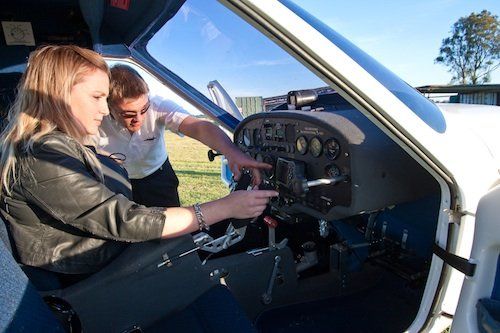
Just as attendance at AirVenture earlier this month showed a brisk uptick, the flight training industry is also enjoying a modest growth spurt through the first part of 2014. According to an informal survey of more than a dozen flight schools across the country conducted by AVweb this month, virtually all report increased training activity beyond the usual seasonal upturn. “It picked up extensively in April. It just started to slow down a little, but that’s okay. We had more students than we could really handle,” said Christa Holden, who manages Haps Air Service in Ames, Iowa.
We heard similar reports from other parts of the country, including the Pacific Northwest, where weather often conspires to keep training flights grounded. But not this summer. “Actually, we have more students than we have instructors right now. We’re all flying the full eight hours about every day,” said Doug O’Donnell, a CFI at Avian Flight Center, near Bremerton, Washington. Eleven hundred miles down the coast at Santa Paula, California, Judy Phelps said CP Aviation is also experiencing consistent demand.”I wouldn’t say we’re up or down. The problem I find is that we have all the airplanes and all the instructors decide to take off the same weekend and now you have all the airplanes sitting with no instructors. It’s hard to find good instructors and keep them around,” Phelps told us.
What’s going on? Some schools think the training surge is due mostly to the economy, but some are noticing a demographic bubble, too. “I think everybody is realizing the economy is not going to tank and they’re sitting on some cash savings and they’re spending. A lot of our clients own businesses and they’re reasonably successful,” says Cody Pierce of Aces High Aviation in Long Beach, California. He says many of his customers are from the entertainment industry, where high salaries support the flying habit.
While the schools we spoke report 20-somethings in the new-student mix, they’re seeing more financially secure empty nesters or middle-aged career people. “The guy I love to see coming through the door is someone who says, ‘I took a few lessons back in my 20s and my kids are in college now, so I decided I want to go back to it.’ Love that guy,” says Larry Sidle, who operates Beaver Valley Aviation near Dayton, Ohio. He flies both Cessna 152s and 172s, as do many of the schools we surveyed. A few are also operating LSAs with varying degrees of success, but older Cessnas remain the bedrock of U.S. flight training.
Among the schools we surveyed who operate Cessna 150s or 152s, the average hourly rental rate is $97. For 172s, the average was $124 per hour for what many in the industry call “classic models,” mid-1970s to mid-1980s aircraft with steam gauges. We found a smattering of flight schools operating newer G1000 Cessna 172s, at an average rental rate of about $155. Most of those aircraft are 2005 or 2006 models because flight schools say anything newer is too expensive to insure and thus too expensive to operate. We polled the schools on their views toward new or refurbed trainers and we’ll have additional reporting on that later.


































